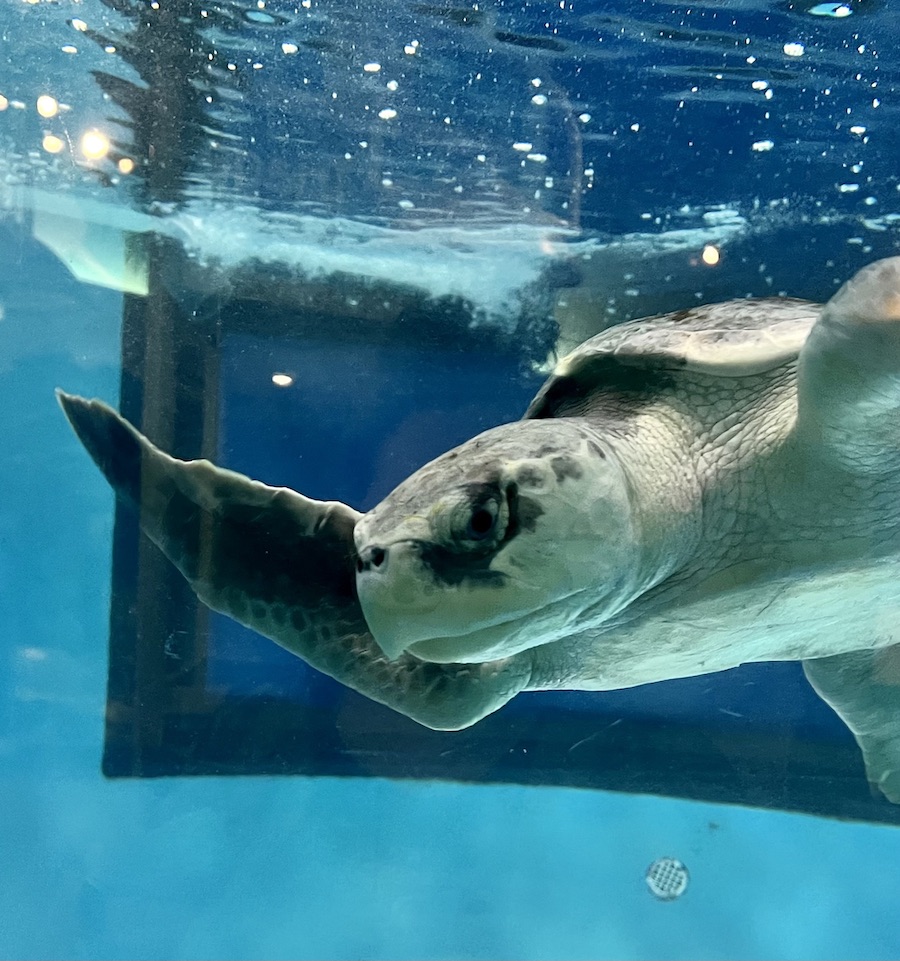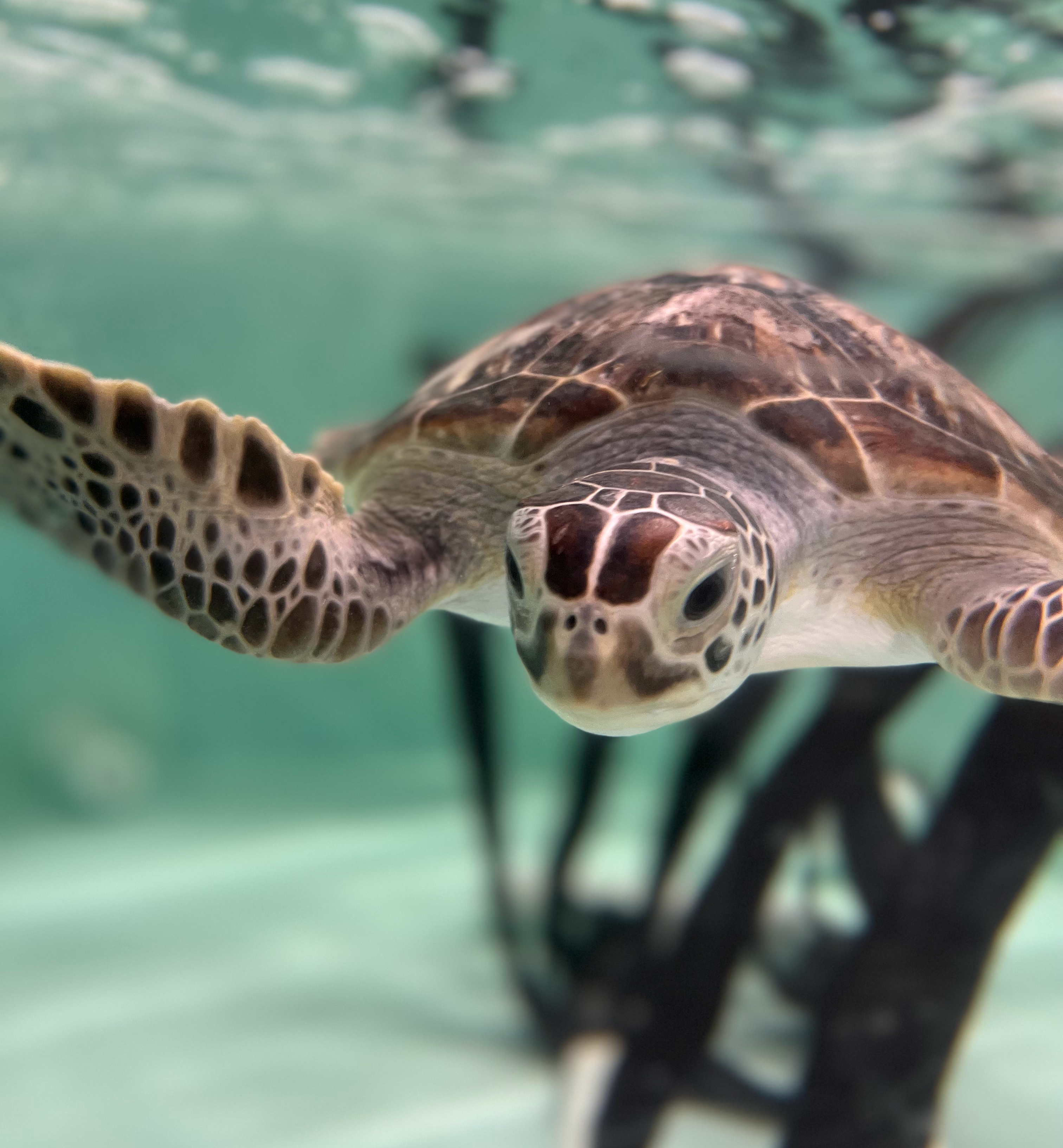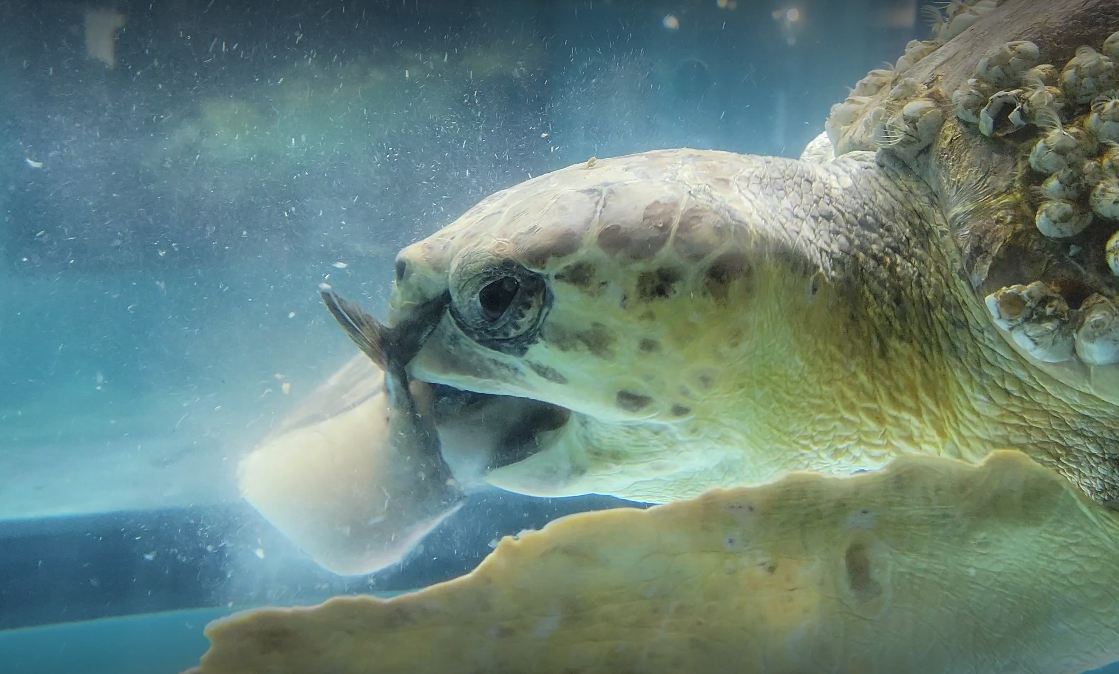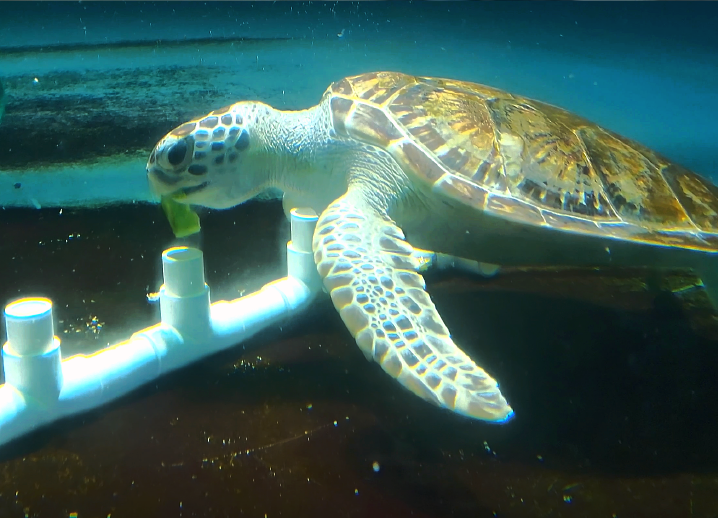Have you ever wondered why a sea turtle is swimming around with a seemingly random object in their tank? Chances are you’re witnessing a form of enrichment in action!
Enrichment is a tool we give to our animals to encourage natural actions and behaviors. By introducing new enrichment items into their habitats, we’re helping enhance animal wellbeing through opportunities and experiences that take into consideration the physical, social, cognitive and sensory needs of each animal.
The Deciding Factor
Enrichment items are added or removed from a sea turtle patient’s tank based on a few factors, including the patient’s ailment, its species and how long it has been in our care. The top priority of our Sea Turtle Care Center™ staff and vet team is always the animal’s safety, and waiting for the right time to introduce any enrichment item is a critical step in every patient’s rehabilitation process. Once it is determined that the patient is ready for enrichment, Care Center staff will build out an individualized plan for which particular items will be introduced and at what frequency.
 A Kemp's ridley patient recovers in the Sea Turtle Care Center.
A Kemp's ridley patient recovers in the Sea Turtle Care Center. It’s important to note that enrichment for our sea turtle patients is slightly different from other enrichment exercises at the Aquarium. Unlike our other animal residents, our sea turtle patients are in our care temporarily; the goal is always to release them back into the wild where they will continue their natural behaviors. Enrichment is vital to the rehabilitation process, but it’s critical that our patients don’t become habituated to Care Center staff or associate them with food.
 A green sea turtle patient has car wash strips placed into their tank for enrichment, mimicking seagrass in the ocean.
A green sea turtle patient has car wash strips placed into their tank for enrichment, mimicking seagrass in the ocean.So… Who Gets What?
In the wild, juvenile green sea turtles like to hang out in seagrass, as that’s their main diet source. To simulate a seagrass habitat for our green sea turtle patients, we place carwash strips in their tanks. Not only is their environment being changed (just like the ocean is ever-changing), but it’s also giving patients a familiar place to camouflage themselves and rest. We always make sure to use items that encourage natural tendencies like this, even though there are no predators to hide from in our Care Center.
For our loggerhead and Kemp’s ridley patients, they seem to enjoy any structure that imitates a cave or hiding spot, like a PVC tube or cube. For our green sea turtle patients, Care Center staff will occasionally create food holders for them using PVC pipe, then place food into the openings and sink it to the bottom of the tank. This simulates foraging in sea grass, just like they would in the wild.
Did Someone Say Fish Pop?
Besides physical structures, we use live prey enrichment like moon jellies and crabs! This enrichment type is typically used near the end of a patient’s rehabilitation process to determine their foraging and hunting prowess before completing the journey home. Due to their natural diets, our loggerhead patients receive live blue crabs, while our green sea turtle patients receive live jellies.
 Pluto, a loggerhead sea turtle patient, takes a bite out of their fish pop during an enrichment exercise.
Pluto, a loggerhead sea turtle patient, takes a bite out of their fish pop during an enrichment exercise. In addition to live food, our Care Center staff also use fish pops as a form of food enrichment. Fish pops are made of ice with various types of fish frozen inside — this doesn’t just activate hunting instincts for the sea turtle, but it allows our loggerhead patients the opportunity to show off their 500–pound bite force!
How Can I Get Involved in Sea Turtle Enrichment?
Throughout the year, we keep track of items that would be useful to have and add them to our Amazon Wish List. The listed items — from foam to make cushy waterbeds for new patients to PVC parts for enrichment structures — go directly to support the critical work that our Care Center staff performs on a daily basis. By purchasing items on the list, you will continue to make a positive impact on sea turtle conservation and on our patients.
During your next visit, don’t forget to take a closer look at the objects in the sea turtle patient tanks… you might even catch a sea turtle eating a fish pop!
A special thank you to our expert, Cait Crosby, senior sea turtle biologist, for her time and knowledge in creating this blog.
Published November 30, 2022


